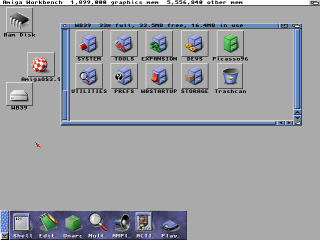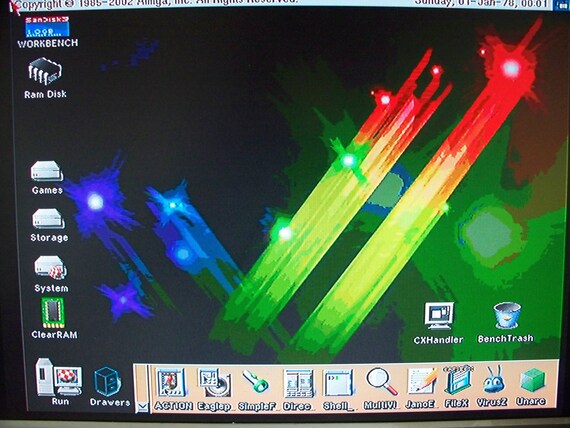

Standard assigns that are generally present in an AmigaOS system include The place an assign points to can be changed at any time by the user. An assign follows, again, the same syntax as a device name however, it already points to a directory inside the filesystem. This is solved in AmigaOS by the use of assigns. whether the file is a library, a documentation file, a translation of the program's messages, etc. Programs often need to access files without knowing their physical location (either the drive or the volume): they only know the "logical path" of the file, i.e. Whenever a requested file on "Work" is being accessed without volume "Work" being present in any drive. However, these are not completely equivalent, since when the latter form is used, the system knows that the wanted volume is "Work" and not just any volume in DF0:, and thus will say something to the effect of

If one wanted to access a file named "Bar" located in directory "Foo" of the disk with name "Work" in drive DF0:, one could write If DF0: contains a disk named "Workbench", then Workbench: will be a volume name that can be used to access files in DF0. For example, DF0: by default refers to the first floppy drive in the system, which DH0: is the first hard drive.įilesystem, however, additionally expose volume names, following the same syntax as device names: these identify the specific medium in the filesystem-managed drive.
AMIGA OS 3.9 BOOT SOUND SERIAL
In the case of filesystem, the specificator usually consists of a path to a file in the filesystem for other handlers, specifiers usually set characteristics of the desired input/ouput channel (for the SER: serial port driver, for example, the specifier will contain bitrate, start and stop bits, etc).įilesystems expose drive names as their device names. After the colon a specifier can be added, which gives the handler additional information about what is being accessed and how. The SPEAK: handler, offering one of several ways to access the AmigaOS speech synthesis system, is one example of a handler offering services not directly related to a peripheral.ĭevice names are case insensitive (lowercase by convention) strings followed by a colon. Handlers typically expose a device name to the DOS, which can be used to access the peripheral (if any) associated with the handler. These filesystems allow one to add new features like journalization or file privileges, which aren't found in the standard OS. The AmigaOS can make use of any filesystem for which a handler has been written, a possibility that has been exploited by programs like CrossDOS and by a few "alternative" filesystems to the standard OFS and FFS. One important type of handler is a filesystem handler. The higher-level part of device and resource management, however, is deferred to handlers, which are not libraries but tasks, and communicate by means of message passing.
AMIGA OS 3.9 BOOT SOUND DRIVERS
One standard AmigaOS library enjoys a special status: the exec.library is the only library in the system hooked to a fixed memory address (address 4), and it basically functions as the AmigaOS kernel.ĭevice drivers are files with a ".device" extensions and are basically special libraries with somewhat standardized calls. The main modularization technique in AmigaOS is based on libraries (files with a ".library" extensions), which are collections of functions much like shared libraries in other operating systems, but don't make use of dynamic linking (this has advantages and disadvantages).


 0 kommentar(er)
0 kommentar(er)
